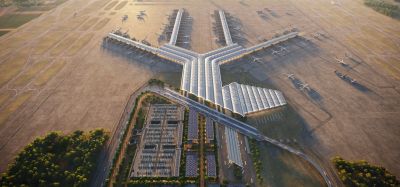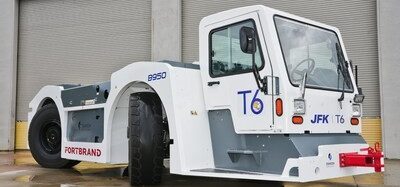An interview with SESAR DM’s Freek de Witte
Posted: 28 April 2016 | Freek de Witte (SESAR) | No comments yet
In an exclusive interview with International Airport Review, Freek de Witte, Head of Stakeholder Relations at SESAR Deployment Manager, discusses the importance of modernising Europe’s airspace and why it is essential for ANSPs and all other stakeholders to maintain a strong working relationship in order to bring about deployment.


Freek de Witte, Head of Stakeholder Relations at SESAR Deployment Manager
Q: We are beginning to see positive results following initial examples of SESAR deployment, going forward what benefits will be seen by the aviation sector?
“Today, deployment is a daily reality in Europe. The return on investment is tangible. There are 84 implementing projects by 45 partners already running in 23 EU Member States and also two neighbouring States. All this is the true demonstration of Europe’s air traffic management (ATM) industry’s willingness to invest in modernisation and meet Single European Sky (SES) challenges.
The expected benefits of SESAR deployment are multiple and not only impact the aviation sector.
- Up to 6% reduction in flight time
- Up to 10% reduction in fuel burn
- Up to 30% reduction in departure delays
- Up to 10% reduction in C02 emissions
- A positive impact on noise and air quality
- Improved safety
- shorter door to door travel time
- 10 kg in fuel saving per passenger
In short, the deployment of SESAR brings a high network performance in terms of safety, capacity, environment and cost efficiency.”
Q: How important is it for Europe to modernise its airspace and achieve that ‘single European sky’?
“Aviation is a strong driver of economic growth, jobs, trade, and mobility for the European Union. It plays a crucial role in the EU economy and reinforces its global leadership position. Therefore, the European aviation sector must remain competitive and reap the benefits of a fast-changing and developing global economy. The EU aviation sector directly employs between 1.4 million and 2 million people and overall supports between 4.8 million and 5.5 million jobs. The number of flights will increase from 9.5 million in 2012 to 14.4 million by 2035. At the same time, growth in air traffic in Europe and worldwide needs to be reconciled with maintaining high standards of aviation safety and security, as well as reducing aviation’s environmental footprint and contributing to the fight against climate change. In short, aviation must grow in a sustainable manner. As a fundamental component of the aviation system involving many aviation stakeholders, ATM and – specifically, the development and implementation of SES – makes an important contribution in this context. Today, SESAR is proving to be a real enabler for achieving SES. It addresses challenges related to the connectivity, competitiveness, safety, and the environment.
“European aviation sector must remain competitive and reap the benefits of a fast-changing and developing global economy”
Q: How important is it that ANSPs and all other stakeholders work together and maintain a strong working relationship?
“The aim of SESAR Deployment Manager (SDM) is the synchronised and timely deployment of Pilot Common Project (PCP) related technologies and procedures. One of the characteristics of the six ATM functionalities within the PCP is that they benefit from or even need synchronised deployment to bring any benefit to the ATM community as a whole. The technologies selected for synchronised deployment need all stakeholders moving forward at the same time. An example is System Wide Information Management (SWIM).
“Working together is crucial, as all stakeholders together form the beating heart of deployment”
So, working together is crucial, as all stakeholders together form the beating heart of deployment. To this end, we created from the start the Stakeholder’s Consultation Platform, where representatives of all involved stakeholders are consulted intensively and are connected both virtually and in real life. As SDM is responsible for coordinating the timely delivery of PCP related projects according to the Deployment Plan (DP), the buy-in of all stakeholders is essential.”
Q: The SDM has recently launched a Call for Expression of Interest to the manufacturing industry. Why was it important to do this? And have you experienced a positive response?
“Indeed, in order to facilitate the industrialisation processes related to the products necessary for the deployment of ATM functionalities and to ensure the timely availability of standards and products according to the Deployment Programme, SDM launched a call to the manufacturing industry on 16 March with the intention of concluding Cooperative Arrangements with all relevant ATM manufacturers.
These Cooperative Arrangements are essential to lessen risks against deployment by providing information to SDM on the availability of PCP related technology; raise the manufacturers’ awareness on what their customers are required to implement and by when, and support their customers in complying with the Deployment Programme; encourage the manufacturing industry to contribute to the timely development of the necessary standards and marketing of the necessary hardware and software; assist the SDM on global interoperability and alignment of industrialisation and deployment roadmaps.
“We received a positive answer from 20 interested ground and airborne manufacturers and are currently setting up the arrangements”
The Call for Expression of Interests was open to all industry manufacturers relevant to the production of ATM functionalities or sub-functionalities related technologies, as specified in the Deployment Programme. We received a positive answer from 20 interested ground and airborne manufacturers and are currently setting up the arrangements, all major market players are covered.”
Q: How will you be involved in the next phase of deployment implementation? (specifically for Freek and his role within SDM)
“As Head of Stakeholder Relations, I am responsible for ‘Stakeholder relationship management’, referring to the tasks of external communication related activities, consultation platform’s management, and management of cooperative arrangements with third parties. This covers the SDM relationship with the opeartional stakeholders as well as the policy stakeholders. As all SDM stakeholders play a crucial role in the success of the deployment across Europe, my team and I will keep on informing and consulting both civil and military air navigation service providers, airport operators and airspace users as operational stakeholders and work closely with the European Comission and all other policy stakeholders.
We are supporting all SDM units to ensure and keep the good relationship we have come to built so far with our stakeholders. For the Deployment Programme 2016, we are now able to put more time into the consultation phase to obtain an even better consulted DP by the end of June. Next to that we are also focussing on our relationship with the European Member States and their crucial involvement in SESAR deployment. The industry is leading the modernisation of our airspace today. We are here to ensure the management of ATM is more efficient in the coming years. In a nutshell, we are here to support European aviation industries and its leadership and to achieve this, open and transparent communication with all stakeholders is crucial.”
Q: What challenges do you see for deployment going forward?
“Our main objectives for 2016 are to update the identified gaps in PCP implementation and focus on next Calls, on what remains to be implemented after CEF Calls 2014 and 2015. The challenge for deployment will be the closure of these remaining gaps around Europe. After the CEF calls 2014 and 2015, full and timely PCP implementation still requires further CEF calls to be planned ahead, this will be achieved through DP 2016.
“Our main objectives for 2016 are to update the identified gaps in PCP implementation and focus on next Calls”
The deployment program will release an early update by June 2016, which will look at what has already been implemented. We are changing the life and strategy of a lot of our stakeholders in technological investments and now that all of them are on board, and we have proven that a strong partnership between the European Commission and the industry is the right model to achieve deployment results, we have to keep up to this level of expectation and remain open and transparent with a high focus on timely deployment. Therefore, we have already started the consultation on Deployment Programme 2016 in March.”
Join our free webinar: Beyond silos: How ecosystem thinking elevates the airport experience
In today’s complex aviation landscape, airports are moving beyond siloed operations to embrace a new era of collaboration. This webinar focuses on how leading airports are using ecosystem thinking to adapt, personalize, and continuously improve every touchpoint, boosting both passenger satisfaction and non-aeronautical revenue.
Date: 13 Nov | Time: 10:00 GMT
REGISTER NOW TO SECURE YOUR SPOT
Can’t attend live? No worries – register to receive the recording post-event.

















